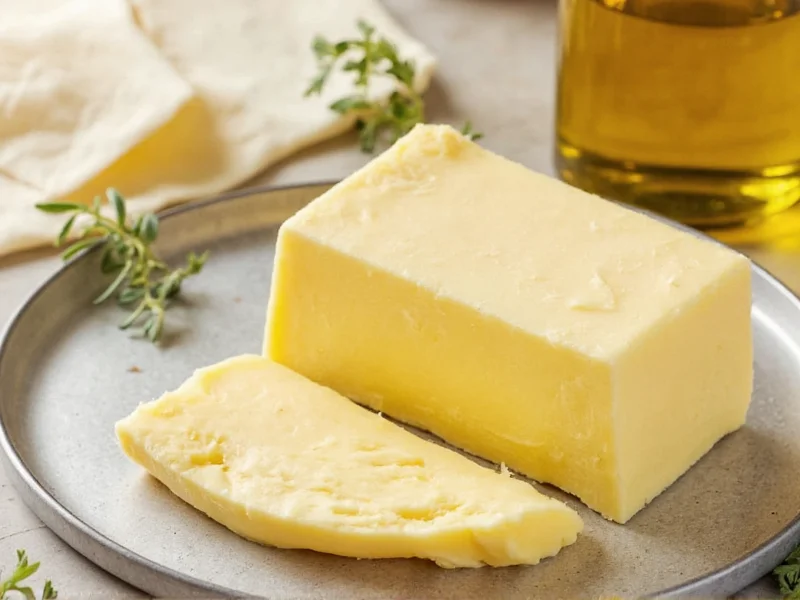When you're in the middle of baking and realize you've run out of vegetable oil, butter can be a practical substitute. Understanding the proper conversion and when this swap works best will help you save your recipe without compromising texture or flavor. The key to successful substitution lies in recognizing that butter contains about 20% water while vegetable oil is pure fat, which affects moisture content and cooking behavior.
Understanding Butter and Oil Substitution Basics
Butter and vegetable oil have fundamentally different compositions that impact how they behave in recipes. Butter contains approximately 80% fat and 20% water, while vegetable oil is 100% fat. This difference significantly affects moisture content, browning reactions, and final texture in your baked goods.
When Butter Works as an Oil Substitute
Substituting butter for vegetable oil works well in several common baking applications. For those wondering can I replace vegetable oil with butter in baking, the answer is generally yes for these recipe types:
- Most cake recipes (especially dense cakes like carrot cake)
- Brownies and fudge-like desserts
- Muffins and quick breads
- Some cookie recipes
The substitution enhances flavor with butter's rich taste, which many prefer over neutral vegetable oil. For specific applications like butter instead of vegetable oil in brownies, this swap actually creates a more fudgy texture that many bakers prefer.
| Recipe Type | Butter:Oil Ratio | Best Preparation Method | Expected Result |
|---|---|---|---|
| Cakes | 3:4 (¾ cup butter for 1 cup oil) | Melt, cool slightly, then use | Richer flavor, slightly denser texture |
| Brownies | 1:1 (equal amounts) | Melt completely before using | Fudgier texture, deeper flavor |
| Muffins | 3:4 (¾ cup butter for 1 cup oil) | Melt and cool to room temperature | More tender crumb, buttery notes |
| High-heat cooking | Not recommended | N/A | Butter burns at lower temperatures |
How to Properly Substitute Butter for Vegetable Oil
Follow these steps for successful substitution when you need to know how to substitute butter for oil in cake recipes:
- Melt the butter completely - Measure your butter, then melt it. Don't just soften it.
- Cool the melted butter - Let it cool to room temperature before adding to your recipe to prevent cooking eggs or other ingredients.
- Adjust the ratio - Use ¾ cup melted butter for every 1 cup of vegetable oil called for (the 3:4 ratio).
- Consider reducing other liquids - Since butter contains water, you might reduce other liquids slightly in moisture-sensitive recipes.
When to Avoid Substituting Butter for Oil
There are specific situations where butter isn't the best substitute for vegetable oil:
- High-heat cooking - Butter has a lower smoke point (around 300°F/150°C) compared to most vegetable oils (400-450°F/200-230°C)
- Recipes requiring neutral flavor - Butter adds its own flavor that may not be desirable in all applications
- Some delicate cakes - Angel food cake and chiffon cakes rely on oil's properties for maximum rise
- Frying applications - Butter will burn before reaching proper frying temperatures
Alternative Substitutes When Butter Isn't Ideal
If butter isn't the best option for your recipe, consider these alternatives for best substitute for vegetable oil:
- Applesauce - Use ¾ cup unsweetened applesauce for 1 cup oil (best for cakes and muffins)
- Yogurt - Substitute plain yogurt in a 1:1 ratio for moisture-rich recipes
- Cooking oil alternatives - Canola, sunflower, or grapeseed oil work similarly to vegetable oil
- Cottage cheese - Blended until smooth, good for protein-rich substitutions
Troubleshooting Common Substitution Problems
When substituting butter for oil, you might encounter these issues:
- Dry baked goods - You may need to add 1-2 tablespoons of additional liquid
- Over-browning - Reduce oven temperature by 25°F (15°C) as butter promotes browning
- Dense texture - Ensure you're not using too much butter beyond the recommended ratio
- Separation - Make sure melted butter is at room temperature before mixing
Frequently Asked Questions
What is the correct butter to oil substitution ratio?
The standard ratio is 3:4 - use ¾ cup (12 tablespoons) of melted butter for every 1 cup of vegetable oil. This accounts for butter's water content, as butter contains about 20% water while oil is pure fat.
Can I use butter instead of oil in cake mix?
Yes, you can substitute butter for oil in cake mix. Melt the appropriate amount of butter (¾ cup for every 1 cup of oil), let it cool to room temperature, then use it in place of the oil. The resulting cake will have a richer flavor and slightly denser texture.
Does melted butter work the same as oil in baking?
Melted butter behaves similarly to oil in the mixing process, but the final results differ. Butter adds distinctive flavor and promotes browning, while oil creates a more consistently moist texture. For best results, follow the 3:4 substitution ratio and consider that butter may create a slightly different crumb structure.
Why shouldn't I use butter instead of oil for high-heat cooking?
Butter has a much lower smoke point (around 300°F/150°C) compared to most vegetable oils (400-450°F/200-230°C). When heated beyond this point, butter burns and develops an unpleasant, acrid flavor, making it unsuitable for high-heat cooking methods like deep frying or searing.
Can I substitute butter for oil in all baking recipes?
No, butter doesn't work well as a substitute for oil in all baking recipes. It's excellent for cakes, brownies, and muffins but not recommended for angel food cake, chiffon cakes, or high-heat cooking applications where oil's neutral flavor and higher smoke point are essential.











 浙公网安备
33010002000092号
浙公网安备
33010002000092号 浙B2-20120091-4
浙B2-20120091-4